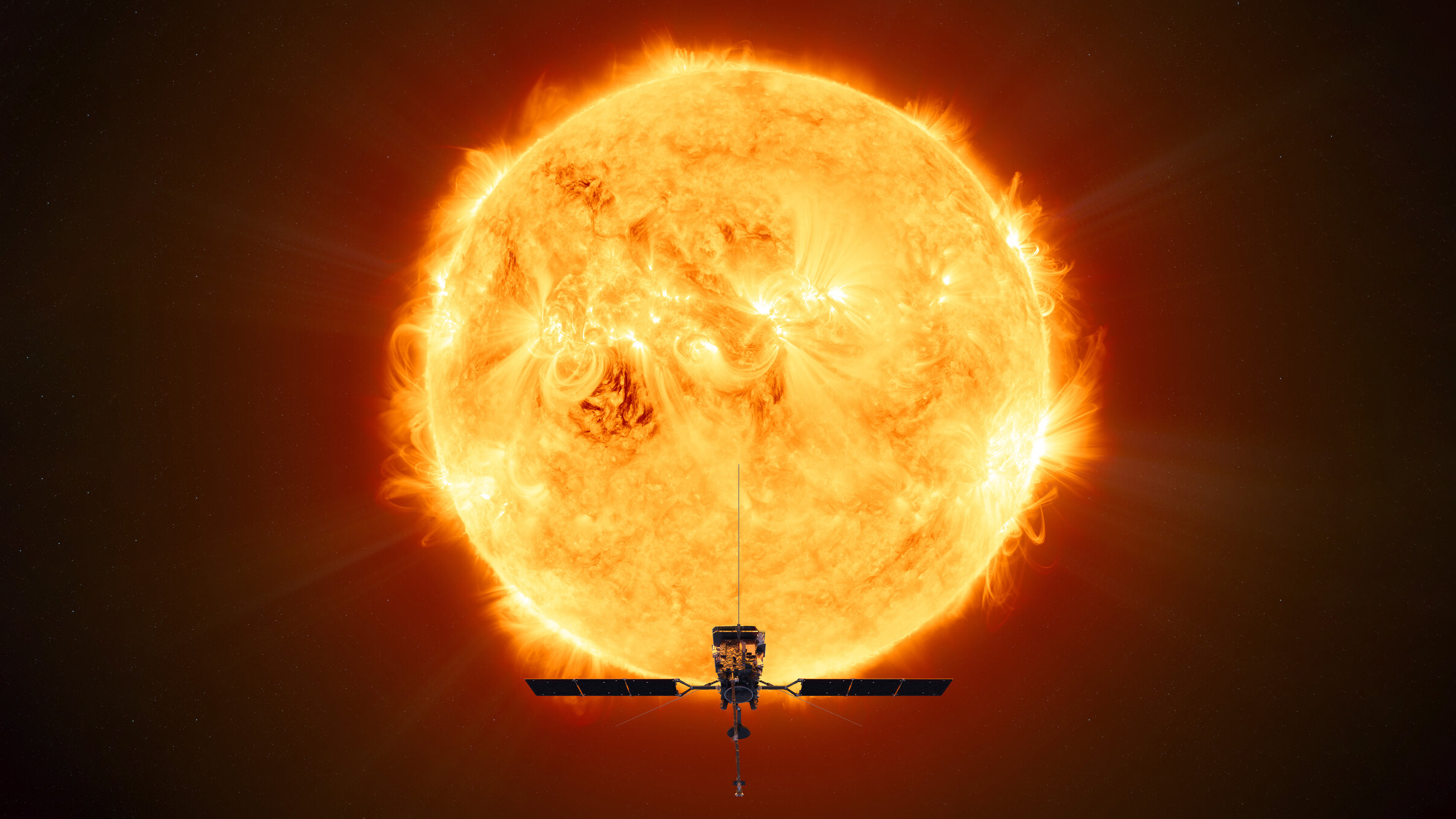Check out this AMAZING photo of the sun (from a mere 46.6 million miles away)
Launched in 2020, the Space Orbiter's mission is to capture photos of the sun closer than any spacecraft has before

The European Space Agency (ESA) has just released a brand new image of the sun taken by the Solar Orbiter. In total, the composite image is made up of 25 photos taken thy the Orbiter’s ultraviolet imager instrument as the spacecraft orbits between the sun and earth.
Space Orbiter was launched in February 2020 and its mission was to get closer to the sun than any spacecraft had done previously. Scientists hope the mission will help answer four important questions. What drives the sun’s 11-year cycle of rising and subsiding magnetic activity? What heats up the upper layer of its atmosphere (known as the corona) to millions of degrees celsius? What drives the generation of solar wind? What accelerates the solar wind to speeds of hundreds of kilometers per second and how does it all affect our planet?
• These are the best cameras for astrophotography
The latest photos were taken 46.6 million miles / 75 million kilometers away from the sun – which is roughly halfway from the earth. In order to capture the whole surface of the sun, 25 images were taken using a high-resolution telescope over a period of 4 hours, each taking around 10 minutes to take.
#ICYMI Zoom in and explore the incredible detail of our home star, courtesy of #SolarOrbiter @EuiTelescope 🤩 https://t.co/2vOYZ7aw92 #WeAreAllSolarOrbiters #ExploreFarther pic.twitter.com/MpDFZW2PJDMarch 27, 2022
To give some idea of how gigantic the life-giving star is in comparison to our planet, scientists provided a photo of the Earth for scale and it looks absolutely teeny tiny. According to ESA scientists the final image contains more than 83 million pixels, which is 10 times more than the best 4K monitors can display.
Since its launch, the Space Orbiter has successfully sent several photos back to Earth, it’s found its way inside Mercury’s orbit, and it’s been recording data about the solar wind particles that flow outward from the sun.
Over the next few years, the Solar Orbiter will continue to take close proximity photos of the sun while gradually changing its orientation so it can photograph the sun's polar regions which until now, haven’t been observed. Space exploration is one of the many ways advancing camera technology can help us understand what lies beyond and hopefully answer questions that have been puzzling scientists since its discovery.
The best camera deals, reviews, product advice, and unmissable photography news, direct to your inbox!
To keep up to date with the Solar Orbiter's mission, you can follow it on Twitter.
Read more:
The best camera for astrophotography
Tips for astrophotography
Incredible astrophotography could be the clearest photo of the sun ever taken

Having studied Journalism and Public Relations at the University of the West of England Hannah developed a love for photography through a module on photojournalism. She specializes in Portrait, Fashion and lifestyle photography but has more recently branched out in the world of stylized product photography. Hannah spent three years working at Wex Photo Video as a Senior Sales Assistant, using her experience and knowledge of cameras to help people buy the equipment that is right for them. With eight years experience working with studio lighting, Hannah has run many successful workshops teaching people how to use different lighting setups.
